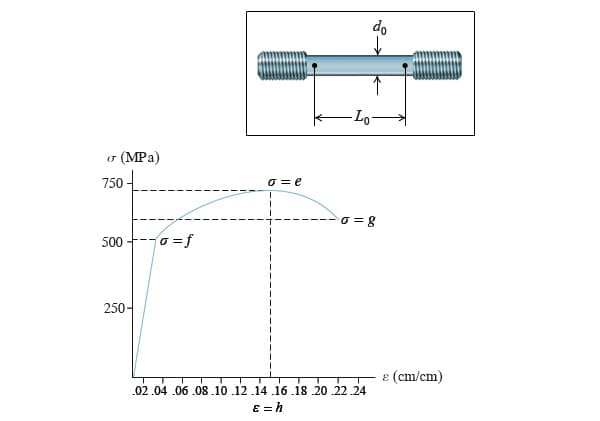To determine the nominal or engineering stress and strain experienced by a specimen of a material while it is subjected to a tension test, and to be able to read important values from a conventional stress-strain diagram obtained from the test. A tension test is being conducted on a steel-rod specimen with a gauge length of L0=50 mm and initial diameter of d0=13 mm. Data were collected to form the conventional stress-strain diagram as shown. From the diagram, f = 506 MPa , e = 689 MPa , g = 585 MPa , and h = 0.146 mm/mm . A) Assuming that the strain remains constant throughout the region between the gauge points, determine the nominal strain ε experienced by the rod if it is elongated to L = 53.0 mm . B) Assuming that the stress is constant over the cross-sectional area and if the tension force used is P = 16.0 kN , find the nominal stress experienced by the rod. C)Determine the force P needed to reach the ultimate stress in the steel-rod specimen.
A tension test is being conducted on a steel-rod specimen with a gauge length of L0=50
mm and initial diameter of d0=13 mm. Data were collected to form the conventional stress-strain diagram as shown. From the diagram, f = 506 MPa , e = 689 MPa , g = 585 MPa , and h = 0.146 mm/mm .
A) Assuming that the strain remains constant throughout the region between the gauge points, determine the nominal strain ε experienced by the rod if it is elongated to L = 53.0 mm .
B) Assuming that the stress is constant over the cross-sectional area and if the tension force used is P = 16.0 kN , find the nominal stress experienced by the rod.
C)Determine the force P needed to reach the ultimate stress in the steel-rod specimen.

Trending now
This is a popular solution!
Step by step
Solved in 2 steps with 2 images









